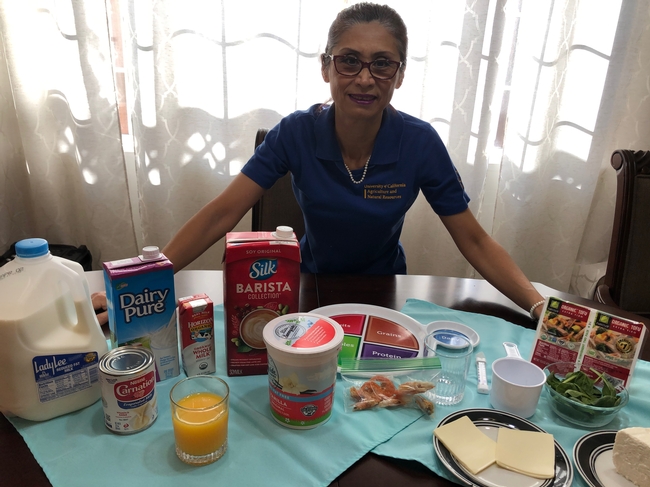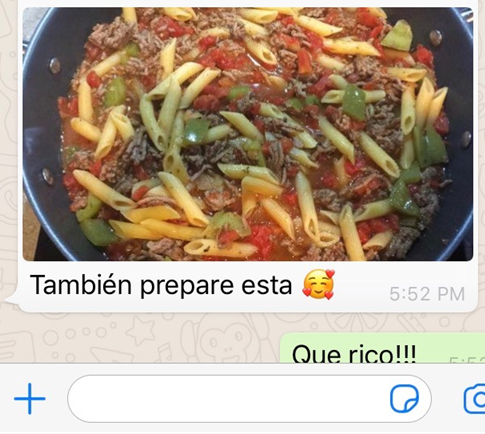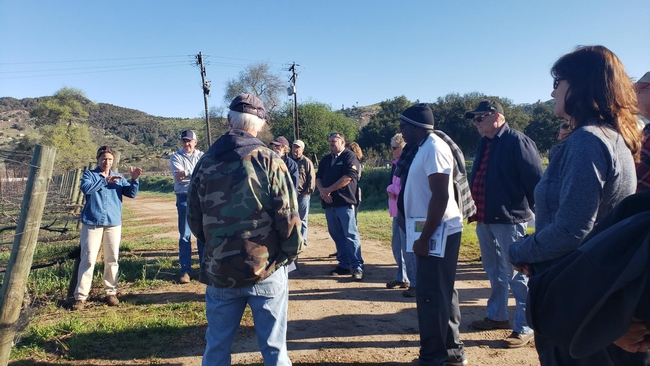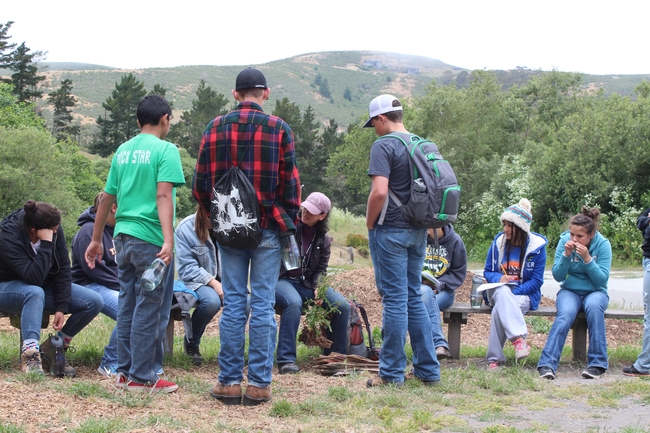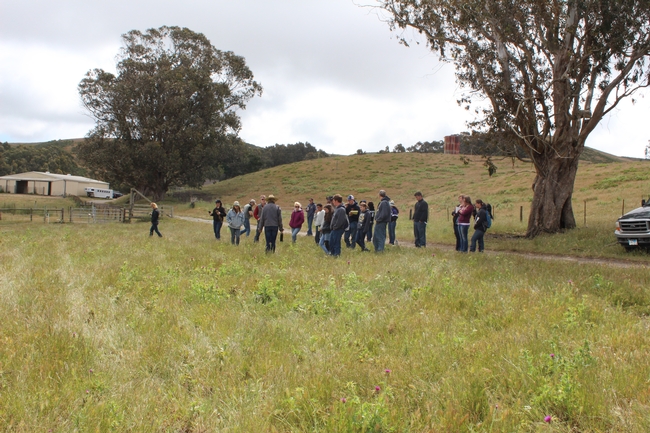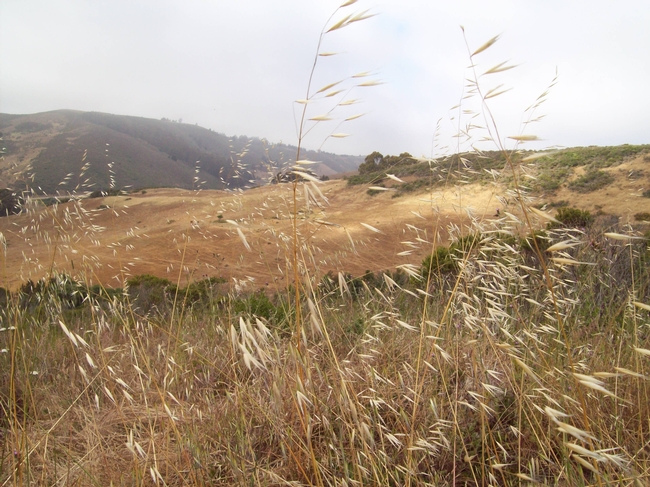- Author: Andra Nicoli
- Author: Pam Kan-Rice
- Author: Mary Vollinger
- Author: Laura Vollmer
- View More...
CFHL, UCCE San Mateo partnership with JobTrain results in 128 adult students increasing food resource management life skills, contributing to UC ANR's public value of safeguarding abundant, healthy food for all California.
The Issue
Research indicates that approximately 134,443 people in San Mateo County live at or below 185% of the poverty level and 18% are SNAP-Ed eligible. Given the pandemic and ongoing economic crisis, this number is expected to grow next year. Of the SNAP-Ed eligible population, 66% of adults are overweight/obese.
How UC Delivers
To address these health concerns, CalFresh Healthy Living, UCCE San Mateo County (CFHL, UCCE) has partnered with JobTrain, a non-profit education and training institution delivering the food resource management curriculum “Plan, Shop, Save and Cook” to adult participants for the past eight years. JobTrain provides career training in fields such as culinary arts, certified nursing assistant (CNA), medical assistance, carpentry, building maintenance, and IT support and services. While this training enables students to move from unemployment into careers offering self-sufficiency, the nutrition and food resource management classes offered through partnership with CFHL, UCCE offer important life skills in consumer decision making, dietary health and wellness.
“These valuable life skills complement the vocational training they receive at JobTrain,” said Elaine Silver, Nutrition Educator for CFHL, UCCE in San Mateo and San Francisco counties. During lessons, JobTrain students learn about MyPlate, shopping on a budget, preparing healthy meals and snacks for families, reading food labels, and the importance of physical activity.
Since October 2020, 128 JobTrain students have taken Silver's virtual Plan, Shop, Save and Cook lessons. In past years, these lessons were delivered in person, but switched to Zoom during COVID-19 stay-at-home orders to allow JobTrain students to continue building these important life skills.

The Impact
Overall, 88% of the students reported improvements ranging from 43% comparing unit prices more often to 60% reading/using nutrition facts labels more often. In addition, 28% of participants reported running out of food less often before the end of the month – suggesting they were more food secure after taking the course.
“I started cooking healthier meals for my family, including veggies,” wrote one survey respondent. “Some of the changes I've made is that I now look at the unit price, just to make sure I am getting my money's worth,” wrote another student. “Also, I have started taking a grocery list with me so that I can make sure I can stay on budget and not buy things that I do not need.”
These outcomes demonstrate how CFHL, UCCE San Mateo County is contributing to UC ANR's public value of safeguarding abundant and healthy food for all Californians. When asked about the impact these virtual classes have had on students' lives, the feedback from JobTrain's instructors has been overwhelmingly positive. In addition to increasing food resource management, instructors noted how much students look forward to classes, how they benefit from incorporating new healthy practices, and that learning more about healthy living helps bolster education for students entering the healthcare field.
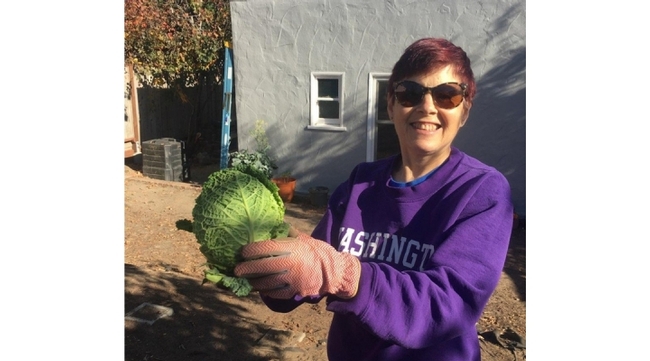
- Author: Katherine Jarvis-Shean
- Author: Allan Fulton
Agricultural clientele utilize Extension information to inform irrigation management decisions, potentially improving water use efficiency and protecting California's water resources.
The Issue
For farmers to grow high-yielding and good quality crops and be good stewards of our finite water resources, they need to know how much water is used by their crop and how much to refill the soil with irrigation. Weather conditions and the crop's life stage determine the water use, also known as crop evapotranspiration (ET). When farmers have accurate crop ET information available, they can more closely apply the appropriate amount of water at the right time and grow more and better quality food and fiber with each unit of water.
How UC Delivers
Since 1995, UC ANR has collaborated with the Department of Water Resources (DWR) to deliver weekly crop ET estimates to growers for the major crops grown in California. These ET estimates integrate real-time, on-the-ground weather measurements taken by DWR and decades of research by UC ANR on crop water use. These reports provide growers with representative estimates of crop ET each week and a running total of crop water use as each crop develops. The weekly rates of ET can be related to the water application rate of an irrigation system to help determine how frequently to irrigate and how long to run a system. Comparing cumulative ET early in the season to the available soil moisture can help decide when to apply the first irrigation of the season. At the end of the season, a comparison of the seasonal ET to total applied irrigation water provides a yardstick to assess irrigation efficiency. Beginning in 2000, methods of delivering these weekly reports expanded to include email and blogs. In 2015, these reports expanded to UC ANR offices throughout the Central Valley to serve more than 1,200 clientele throughout California.
The Impact
In 2019, a one-time survey was sent to about 1,200 clientele throughout California, including growers, agricultural land managers, and crop advisors to understand how the weekly ET reports were being used, quantify the impact of use of the emails, and assess the needs of irrigation education. The survey findings indicated that 70% of clientele use these weekly ET reports in irrigation management decisions. Of that 70%, 75% use the information to inform how long to irrigate, 73% how frequently to irrigate, 53% when to begin the irrigation season, and 39% when to end the irrigation season.
Research has shown that scheduling irrigation based on ET can improve plant health and yields, translating to more crop per drop. Previous UC ANR research has demonstrated that California growers save approximately $64.7 million per year by using CIMIS weather station data. In this way, UC ANR contributes to improved water use efficiency, demonstrating UC ANR's commitment to the public value of protecting California's natural resources.

- Author: Dana Yount
- Contributor: Emily Lovell
- Contributor: Caddie Bergren
- Contributor: Nicki Anderson
- View More...
UC ANR Climate Smart Agriculture Educator team assisted growers to win CDFA grants that reduced greenhouse gases equivalent to removing roughly 7,000 cars off the road, supporting UC ANR's public value of building climate-resilient communities and ecosystems.
The Issue
Increasingly extreme and erratic weather patterns caused by climate change threaten crop yields and farm profits across the state. Growers must continue to adapt to climate stressors, such as increased temperatures and occurrences of drought, and can aid in reducing climate change through their farming practices.
How UC Delivers
A collaborative partnership between the Strategic Growth Council, California Department of Food and Agriculture (CDFA), and University of California Agriculture and Natural Resources (UC ANR) teamed up to support 10 Climate Smart Agriculture Community Education Specialists (CSA CES) throughout the state to provide technical assistance and outreach to promote Climate-Smart Agriculture Incentive Programs. These programs include:
- The Healthy Soils Program, which incentivizes the implementation of climate-smart agriculture practices such as cover cropping, composting, crop rotation, and mulching which reduce erosion and greenhouse gases
- The State Water Efficiency and Enhancement Program (SWEEP), which encourages farmers to install more efficient irrigation systems that decrease water consumption and greenhouse gas (GHG) emissions; and
- The Alternative Manure Management Program (AMMP), which awards funds to livestock producers who decrease their methane emissions by changing the way they manage manure.
Since establishing this partnership in 2019, the UC ANR Climate Smart Agriculture Educator team has provided hands-on assistance to over 200 farmers and ranchers through the complex application process. Collaborating with other CDFA technical providers to host workshops, field days, and events has expanded reach to a greater number of growers, over 120 of whom were able to receive funding after receiving technical assistance. UC CSA CES efforts don't stop at the outreach or application phase; educators work year-round to ensure successful implementation of climate-smart projects.
After the award process, educators assist awardees in completing grant invoicing and contract reporting requirements and connect them with vendors, industry experts, and service providers. UC CSA CES also engage in a variety of additional support activities. For example, to help establish successful cover crop adoption, one educator created a cover crop decision-making tool. A different educator started a small compost spreader rental program to assist small growers in spreading compost. Another facilitates full project management through translation services to a cooperative of Cantonese-speaking awardees.
The Impact
Through assisting awardees in the adoption of practices such as cover cropping, installing solar panels, and installing dairy manure solid separator systems, the 10 UC CSA CES have collectively supported growers in reducing 33,000 MT/CO2 per year, as measured by California Air and Resources Board (CARB) Green House Gas Emission reduction calculator (SWEEP GHG Calculator on CDFA's website), and the HSP Comet planner tool. That's equivalent to removing 7,000 cars from the road per year.
Table A provides an overview of how much GHG has reduced in counties where the UC Climate Smart Agriculture Educator team has helped farmers implement climate-smart practices. Totals for all projects are much higher.
|
UCCE-County Location |
Total CO2 equivalent in MT/year |
|
Sonoma, Mendocino, and Lake County |
314.2 |
|
Merced, Madera, Stanislaus |
5263.31 |
|
Glenn, Butte, Colusa, Tehama County |
4545.785 |
|
Yolo, Solano, Sacramento, San Joaquin, El Dorado, Sonoma, Colusa, Sutter |
11716.4 |
|
Santa Clara County |
58.85 |
|
Fresno County |
1353.924 |
|
Kern & Tulare Counties |
7060.283 |
|
Santa Barbara, Los Angeles, Orange, Ventura County |
630.5 |
|
San Diego and Riverside Counties |
300.18 |
|
Imperial County and Riverside County |
3689.1 |

Glenn County grower, Shannon Douglass says, “When producers have the support from the UCCE office that they already know and trust, they are more willing to implement new practices. The application process is intimidating, but with the help from UC, soil healthy practices are becoming much more widely adopted.”
Research shows that Healthy Soils Program practices such as compost application increases the amount of organic matter in soil, amongst numerous other benefits such as increasing the water and nutrient retention capacity of soils, providing a reservoir of nutrients for plants, improving aeration, improving water infiltration, reducing soil erosion, and supporting the abundance and diversity of soil organisms, which can improve plant health. Compost application is just one fundable practice farmers can implement to help reduce greenhouse gases on their operation.
Thanks to this unique partnership with CDFA, UC ANR is able to provide hands-on support to farmers statewide so that they can improve the health of their soils, reduce livestock methane emissions, and improve water use efficiency. In this way, the Climate-Smart Agriculture program contributes to UC ANR's public value of building climate-resilient communities and ecosystems.
- Author: Julie Finzel
- Author: Theresa Becchetti
- Author: Rebecca Ozeran
- Author: Devii Rao
UC ANR Advisors restructured Range Camp, a rangeland education program that has helped 95% of participants improve their understanding of ecosystem processes in California's rangelands, supporting a more qualified workforce.
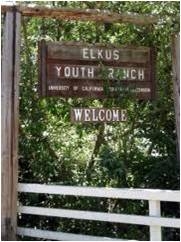 Elkus Youth Ranch - Welcome!The Issue
Elkus Youth Ranch - Welcome!The Issue

Rangelands cover 62.9 million acres of California; almost 63% of the state. California rangelands support livestock production and provide important ecosystem services including wildlife habitat, recreation opportunities and beautiful viewsheds. California's Range and Natural Resources Camp (Range Camp) provides a five day immersive camp experience for high school students ages 15-18 focused on the science and art of range and natural resources management. The camp is held annually at UC's Elkus Ranch. For 35 years, the California-Pacific Section of the Society for Range Management organized and sponsored Range Camp. As time passed, it became clear that a new organization needed to pick up the reins of Range Camp to sustain this effective youth science education outreach program.
How UC Delivers
This week-long long camp is held annually at UC's Elkus Ranch and provides an immersive experience focused on the science and art of range and natural resource management. Livestock and natural resources Advisors Theresa Becchetti, Julie Finzel, Rebecca Ozeran, and Devii Rao provided capacity for all facets of Range Camp planning and operations. They secured funding to integrate a teacher training component into camp and to facilitate the development of a high school range management curriculum focused on the unique characteristics of California rangelands.
When the COVID-19 pandemic struck, and it became clear that an in-person camp was not feasible, the camp was restructured to accommodate an all virtual experience. The traditionally week-long camp was condensed into 23 brief videos and activities, each of which covered an important science concept. Topics included:
- Rangeland Ecology
- Rangeland Monitoring
- Plant Identification
- Ornithology
- Virtual Ranch Tours
- Ranch Economics
- Wildlife
- Climate Change
- Fire Ecology
- Careers in Range Management
The Impact
A survey was distributed in 2017 to campers from 2001-2016 to assess the impact of Range Camp. The survey response rate was 18%, with 95% of respondents indicating that camp increased their understanding of natural resources and 90% of respondents reporting that camp changed their perceptions of how our personal actions affect the environment. College majors among survey respondents were heavily weighted towards science degrees. Range Camp graduates have gone on to be UCCE Advisors, work for NASA, direct youth education outreach organizations and more, demonstrating how new partnerships and contributions from UC ANR Advisors have cultivated new rangeland professionals and contributes to UC ANR's public value of developing a qualified workforce. Range Camp is about more than teaching science; it's about challenging preconceptions, fostering new friendships, and building life skills. One camper stated:
I felt so complete when the sun was disappearing behind the hills…it was as if camp made me realize that I can make a difference. Suddenly, beating global warming and climate change seemed possible…Range Camp has enlightened me. It has changed me. It has permanently made me a ‘happy camper.'
To learn more about Range Camp, visit our program website.
- Author: Leah Sourbeer
Alameda County EFNEP courses provided online cooking education and local referral to food resources during the COVID-19 pandemic, helping increase participants food security, and supporting UC ANR's public value of safe, sufficient, and healthy food for all Californians.
The Issue
COVID-19 has impacted low-income communities by increasing rates of food insecurity. In Alameda County, the food insecurity rate is projected to increase 52% from 2018 to 2020. Families have increasingly relied on food banks and food distribution events to provide adequate nourishment during this time. As reported by KPIX CBS SF Bay Area, Mike Altfest, Community Engagement Director for the Alameda County Food Bank, stated “Since the start of this pandemic, our food distribution has increased between 50 and 70 percent.” Additionally, “We've never seen anything like this in 35 years in business.”
How UC Delivers
In response to COVID-19 shelter-in-place orders, Alameda County Expanded Food and Nutrition Education Program (EFNEP) educator Nelly Camacho pivoted to offer remote nutrition classes to parents in place of traditional in-person classes. EFNEP class participants shared how difficult it was for them to feed their families given job losses, reduced work hours, children being home from school, and other challenges. To respond to community members' needs, Nelly spent extensive time researching and calling food distribution sites to provide updated information to her participants. She shared dates, times, locations, and any special notes such as ‘They're also giving out diapers!' with her classes.
Nelly also focused her recipe demonstrations on the food items commonly distributed at food bank sites. At times, food items available at distribution events are unfamiliar to participants, and they may not know how to prepare them. To help with this, participants notified Nelly in advance about what items they had received so that she could prepare recipe demonstrations using those foods. Participants were excited to learn new, tasty recipes using the food they received, and shared photos of their homemade dishes. Recipe demonstrations included a smoothie using both kale and canned fruit, a ‘tuna ceviche' highlighting tuna fish and onion, and new ways to use cottage cheese,a food item many participants did not usually consume, such as the addition of cottage cheese to the traditional Peruvian dish called Papa a la Huancaina.
The Impact
Nelly's efforts to provide food resource information was effective and wide-reaching. Her participants shared the information with other family, friends and neighbors, increasing food access to additional families in need. EFNEP evaluation data collected between April and September 2020 showed that 52% of 44 participants improved in at least one food security indicator (not eating less than you wanted so there was more food for your family or having enough money to get food). This finding is promising because research shows that food insecurity is related to poor physical and mental health outcomes. According to one participant, "There were foods that I didn't know (and) now I will cook them. It was nice to share with my friends." (EFNEP participant, Hayward). Another remarked, "Thank you for letting me know where to get free food." (EFNEP participant, Newark). By offering local referral to food resources and complimentary cooking classes, Alameda County EFNEP helps to support UC ANR's public value of safe, sufficient, and healthy food for all Californians during a crucial time.
